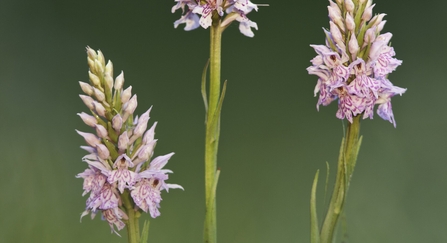Ten years ago, the former Prince of Wales launched Coronation Meadows in 2013 to honour the 60th year of the late Queen’s accession to the throne.
In the face of the catastrophic loss of 97% of our wildflower meadows since the 1930s, the plan was to create new and restored meadows using donor seed from remaining fragments of ancient and traditional meadows.
The Wildlife Trusts and Plantlife – charities for whom the former Prince of Wales was patron – worked together to identify 60 species-rich meadows which are known as Coronation Meadows, one for every year of the Queen’s reign at that time. These special places became donors to provide precious seed to increase the amount of valuable and beautiful wildflower habitat elsewhere.

